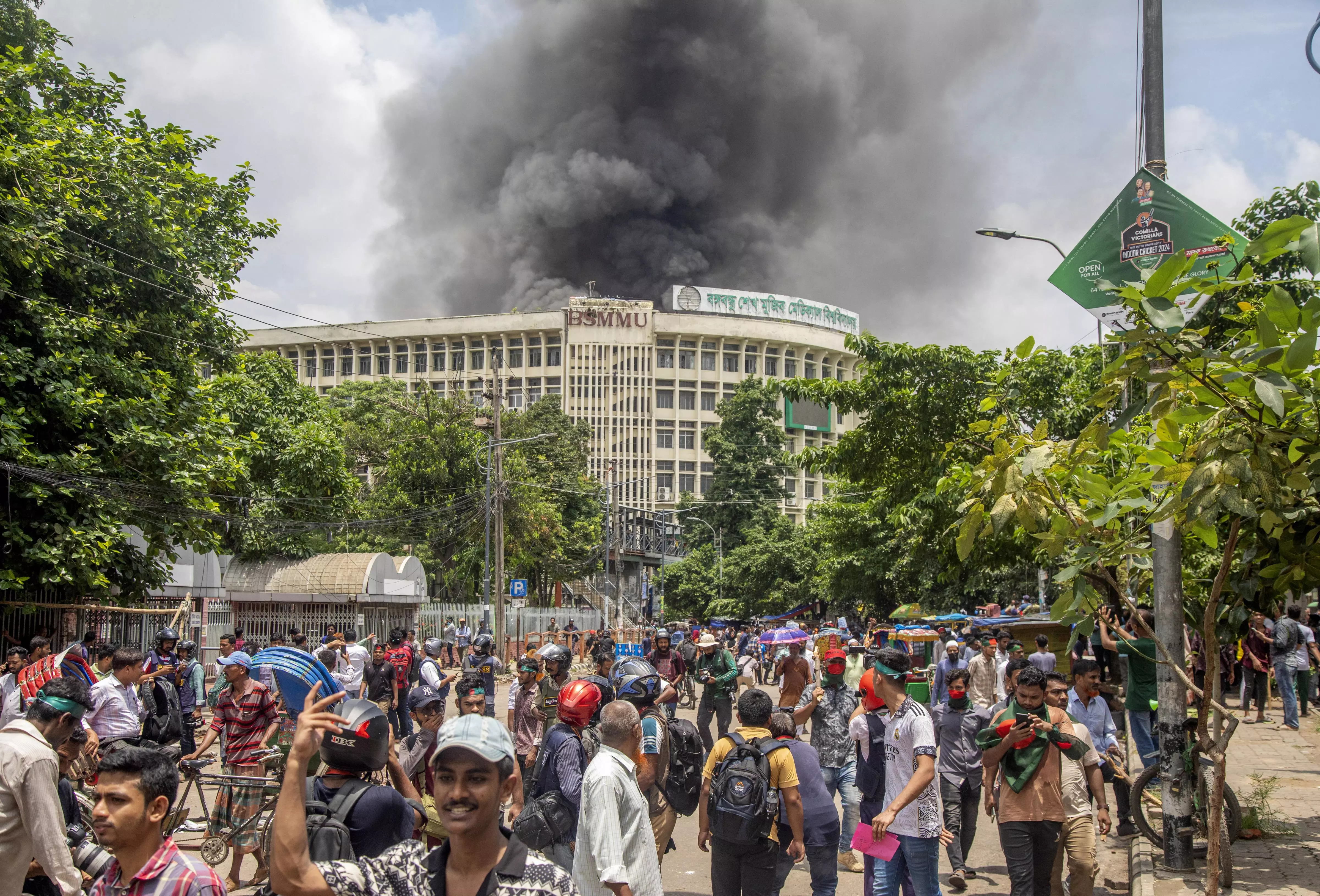
- Home
- India
- World
- Premium
- THE FEDERAL SPECIAL
- Analysis
- States
- Perspective
- Videos
- Sports
- Education
- Entertainment
- Elections
- Features
- Health
- Business
- Series
- In memoriam: Sheikh Mujibur Rahman
- Bishnoi's Men
- NEET TANGLE
- Economy Series
- Earth Day
- Kashmir’s Frozen Turbulence
- India@75
- The legend of Ramjanmabhoomi
- Liberalisation@30
- How to tame a dragon
- Celebrating biodiversity
- Farm Matters
- 50 days of solitude
- Bringing Migrants Home
- Budget 2020
- Jharkhand Votes
- The Federal Investigates
- The Federal Impact
- Vanishing Sand
- Gandhi @ 150
- Andhra Today
- Field report
- Operation Gulmarg
- Pandemic @1 Mn in India
- The Federal Year-End
- The Zero Year
- Science
- Brand studio
- Newsletter
- Elections 2024
- Events
- Home
- IndiaIndia
- World
- Analysis
- StatesStates
- PerspectivePerspective
- VideosVideos
- Sports
- Education
- Entertainment
- ElectionsElections
- Features
- Health
- BusinessBusiness
- Premium
- Loading...
Premium - Events

The mood of the quota movement has a strong anti-India flavour — one of the popular slogans is 'Leave Bangladesh if your uncle's home is India'
After nearly 100 deaths in a day on August 4, the Bangladesh government has imposed an indefinite curfew for three days in a desperate attempt to control the anti-government agitation that is fast threatening to spiral out of control.
The campaign that began as protests against unusually high quotas in government jobs, especially for descendants of freedom fighters who fought against the Pakistan Army in the 1971 Liberation War, has now taken the shape of a movement to oust the Awami League government of Prime Minister Sheikh Hasina.
(Sheikh Hasina has subsequently resigned as Bangladesh Prime Minister.)
It’s now anti-Hasina movement
After the Supreme Court judgment slashed the job quotas from 56 to only 7 per cent, the original issue triggering the protests has taken a back seat. The student groups that demanded scrapping the quotas now want the government’s resignation because they hold it responsible for the deaths of a few hundred protesters in the second part of July.
"Ager lasher hiseb, pore quotar hiseb" (First the deaths, then the quotas) is the dominating slogan now.
High-handedness backfires
The situation, largely caused by the government’s high-handedness in the movement's initial stages, is a godsend for Opposition parties, which have now extended support to the movement whose one-point agenda is to topple the Awami League government.
The crackdown that led to the deaths of hundreds went a long way in reinforcing the opposition narrative of lack of democracy marked by redeeming characteristics of a one-party police state. Slowly, the peaceful protests took a violent turn with large-scale arson and attacks on those identified with the government.
Violence, counter-violence
The government's response swung between offers of negotiations and resorting to the classic Bengali "mathe dokol" (capturing the turf) politics when armed party cadres silence the opposition by show of and, if required, use of force. That led to violent clashes on August 4.
When the student leaders refused Hasina's overtures for negotiations, Awami League secretary general Obaidul Quader announced a programme that brought ruling party cadres to the streets.
The clashes turned violent, and both sides were determined to hold onto the turf. The government was left with no choice but to declare an indefinite nationwide curfew and call out the army.
Policemen lynched
Some policemen had been killed in the early part of the agitation. But when a huge mob descended on the Enayetpur police station in Sirajganj and lynched to death 13 policemen, that was cause for worry. Either the police would be demoralised or they would hit back in vengeance. Both ways, it would create complications.
The extent to which the beleaguered Awami League is now depending on the army to control the situation is evident from social media posts by party campaigners highlighting army chief Waqar u Zaman's statement that the army can "bring back normalcy in a few days".
India needs to worry
So far, the Army has been restrained. A former Army chief, Gen Iqbal Karim Bhuiyan, has asked soldiers not to fire on “our children". Bhuiyan, a general quite popular with soldiers during his tenure, was also very critical of the crackdown.
India, while maintaining that the matter is an internal affair of Bangladesh, has much to worry about. Its missions have already pulled out 7,000 Indian students, many of whom faced the wrath of the protesters because India is seen as the strongest backer of Hasina. But more than 1,000 students still remain in Bangladesh.
Hindus slain, temples attacked
In the last few days, there has been a spate of attacks on Hindu temples across the country and some community leaders have been brutally killed. Islamist radicals who have clearly joined the movement are said to be responsible for these attacks.
But the general ambience of the quota movement has a strong anti-India flavour -- one of the popular slogans is "Bharat jader mamabari, Bangla charo taratari." (Leave Bangladesh if your uncle's home is India).
India’s strategic considerations
India-Bangladesh relations blossomed after Hasina came to power and addressed India's security and connectivity concerns. With the protests assuming a mass character, the Islamist opposition now has the stage to attack bilateral agreements like the transit deal, which provides for rail and connectivity to northeast India through Bangladesh.
So, when opposition social media activists call for disrupting "all rail lines leading to India", Delhi will have to think hard about its response if Bangladesh descends into chaos.
(The Federal seeks to present views and opinions from all sides of the spectrum. The information, ideas or opinions in the articles are of the author and do not reflect the views of The Federal)


